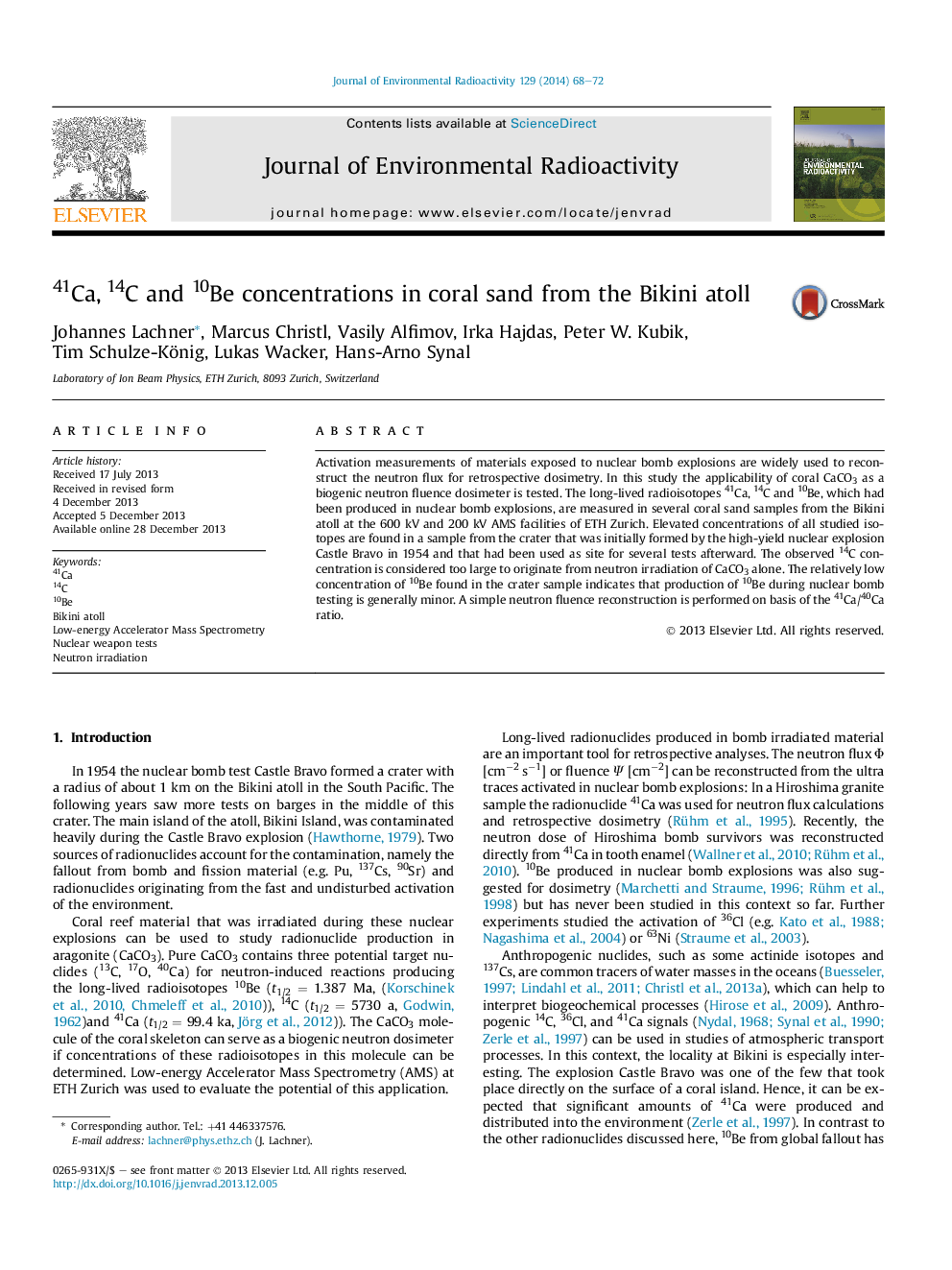| Article ID | Journal | Published Year | Pages | File Type |
|---|---|---|---|---|
| 1738072 | Journal of Environmental Radioactivity | 2014 | 5 Pages |
•Concentrations of 41Ca, 14C and 10Be were determined at the Bikini atoll.•The radionuclides were measured via low-energy Accelerator Mass Spectrometry.•Neutron fluences in the coral CaCO3 target were estimated at the test site.•A global signal of anthropogenic 10Be in natural archives cannot be expected.
Activation measurements of materials exposed to nuclear bomb explosions are widely used to reconstruct the neutron flux for retrospective dosimetry. In this study the applicability of coral CaCO3 as a biogenic neutron fluence dosimeter is tested. The long-lived radioisotopes 41Ca, 14C and 10Be, which had been produced in nuclear bomb explosions, are measured in several coral sand samples from the Bikini atoll at the 600 kV and 200 kV AMS facilities of ETH Zurich. Elevated concentrations of all studied isotopes are found in a sample from the crater that was initially formed by the high-yield nuclear explosion Castle Bravo in 1954 and that had been used as site for several tests afterward. The observed 14C concentration is considered too large to originate from neutron irradiation of CaCO3 alone. The relatively low concentration of 10Be found in the crater sample indicates that production of 10Be during nuclear bomb testing is generally minor. A simple neutron fluence reconstruction is performed on basis of the 41Ca/40Ca ratio.
